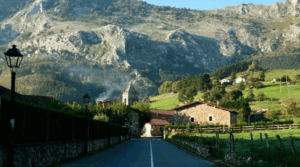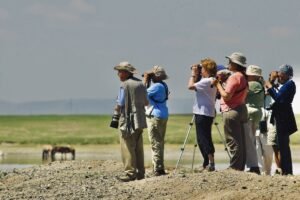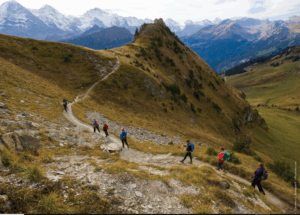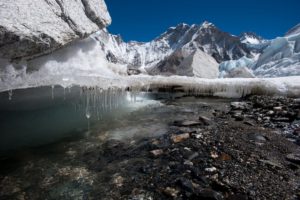Nepal: From 60m. to 8848 metres
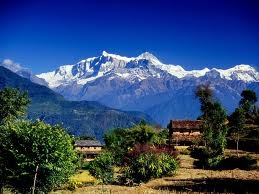
– Ramesh Tiwari—
Nepal is a tourist gold mine, and the capital Kathmandu a living cultural museum of the world. The co-author of “The Rough Guide to Nepal” James McConnachie opines, ‘Nepal really opened itself to the outside world some fifty years ago…now Nepal has overthrown a virtually medieval monarchy, launched democracy, seen its royal family massacred, started a Maoist insurrection (and stopped it again) deposed its new king and contemplated federalism.’
Nepal, an underdeveloped country in South Asia with an area of 147,181 sq. km and 26.7 million population ,is not only rich in its cultural heritage reflected amply by the architectural marvels such as ancient palaces, temples and monuments but also endowed with natural beauty. The trekking and mountaineering trails passing through rolling hills, majestic mountains and deep valleys remind the trekkers and mountaineers a ‘Shangri-La’ to be explored in their life-time.
The Lonely Planet writes- ‘ Draped along the greatest heights of the Himalaya, Nepal is where the ice-cold of the mountains meets the steamy heat of the Indian plains. It’s a land of yaks & yetis, stupas and Sherpas and some of the best trekking on earth. Only in Nepal you can trek for weeks without the need even for a tent. No longer does your name have to be Tenzing or Hillary to set foot in Everest Base Camp. Nepal is an amazingly diverse country that offers something for everyone. One journey through this land is rarely enough. The first thing many people do after a visit is start planning the next one.’
Alluring snow-clad mountains, green hills, beautiful valleys, magnificent lakes, socio-cultural heritage, white water rafting and jungle safaris attract thousands of tourists to Nepal each year. There is no country in the world with geography as extreme as that of Nepal. The mountain and Terai region (covering 23 percent of total area with 20 districts) have different geographical structure and climatic conditions, altitude ranging from 60 metres (Kechana Kalan of Jhapa district) to 8848 metres(Mt. Everest) from the sea level.
The mountain region (occupies 35.2 percent of the total area with 16 districts) and the hilly region (42 percent of the total area with 39 districts) is magnet for trekkers and mountaineers the world over since the early 1920’s. These regions, relatively isolated and economically underdeveloped, have allured international visitors in terms of trekking and mountaineering. Very few countries in the world offer as many varieties of adventure tourism as Nepal.
Boasting eight of the world’s highest mountains above 8000 meters, ten world heritage sites, pristine natural beauty accompanied by the distinctive cultural features preserved in the mountain enclaves and habitations, Nepal has attracted travellers, trekkers, mountaineers and scholars from different parts of the world. Many travel writers have described Nepal as-land of the living Goddess, Himalayan pilgrimage, the country of Mt. Everest, country of non-stop festivals, land of brave Gurkhas, Shangri-La, land of Yak and Yeti, birth place of apostle of peace-Lord Buddha, melting pot of Hinduism and Buddhism and a living cultural museum of the world. Traditionally deemed as an adventure destination for mountaineers and trekkers, tourists are exploring the country’s rich cultural heritage, fascinating landscape and nature in recent years.
The major attractions of Nepal are majestic snowy Himalayas, beautiful natural lakes and rivers, world famous Hindu and Buddhist pilgrimage sites, national parks and reserves with a variety of endangered wildlife and rich cultural tradition of its people. A traveller visiting Nepal can enjoy adventurous activities like mountaineering, trekking, rafting, kayaking, mountain biking, paragliding, bungee-jumping and enjoy a mountain flight to view the grandeur and spectacular scenery of the Himalayan range including Mt. Everest. A traveller, who loves soft adventure, can explore cultural heritage of the three ancient cities of Kathmandu valley.
The Kathmandu valley -Kathmandu, Patan and Bhaktapur situated at an altitude of 1300 meters with an area of 570 sq. km. and nearly 2.2 million populations – is a home to a world-class artistic and architectural heritage. As the seven world heritage sites- Kathmandu Durbar Square, Patan Durbar Square, Bhaktapur Durbar Square, Swayambhunath, Boudhanath, Changu Narayan and Pashupatinath are located within 20 km. radius of the city, the tourists can explore the living cultural museum during their short stay in Nepal.
Nepal, mentioned as a trekker’s paradise, offers once-in a life-time opportunity to the trekkers to visit remote parts of the country and get acquainted with lifestyle of its people. Treks in Nepal range from short ones to a couple of days and weeks, especially in the trekking season from mid-September to May which depends on trekker’s interest, time and experience. Thousands of trekkers from around the world trek the most popular trekking regions of Nepal such as Everest region, Annapurna circuit, Helambu, Gosainkunda, Langtang, Mustang, Jumla, Dolpa etc.each year. The recently launched 1700 km Great Himalayan Trail trek has lured the trekkers since the last two years.
In addition, Nepal is considered as an eco-tourism destination and a centre of wildlife tourism and jungle safari owing to her rich bio-diversity. A total of 9 national parks, 3 wildlife reserves, 6 conservation areas, and 1 hunting reserve including 11 buffer zone areas in and around protected areas covering 19.70 percent of the land offer the travellers to discover a large variety of ecosystem including plant species, birds and animals. Chitwan National park, designated by UNESCO as natural heritage site in 1984, is one of the success stories in wildlife tourism protecting one-horned rhinoceros and Royal Bengal tigers including different species of birds, mammals, reptiles and water animals. Chitwan National park, one of the top wildlife safaris in Asia, is considered the’ Best Wildlife Safari Destination of the World ‘ with facilities of six famous hotels and jungle lodges inside the national park area, about 90 hotels and lodges in Sauraha and 17 more in emerging Patihani area of Chitwan.
The Pokhara valley, 200 km-west of Kathmandu, is another popular destination of Nepal and the Lake City provides ample opportunity of sightseeing of majestic panoramic views of the Annapurna Himalayan range, fishtail peak- Machhapuchhare, boating in popular Fewa Lake and fishing in garden of seven lakes. Renowned travel writers have opined that the tourist travels to Nepal will be incomplete without visit of Pokhara, Chitwan, and Lumbini, the birth place of Lord Buddha. Ekai Kawaguchi, the first Japanese to visit Nepal in 1899, noted in his travelogue that ‘in all my travels in the Himalayas, I saw no scenery so enchanting as that which enraptured me in Pokhara.’
The majestic towering mountains, turbulent streams, azure lakes, softy waterfalls, conjure visions of a Himalayan Shangri-La, rich cultural heritage and unforgettable jungle safaris have attracted thousands of visitors to Nepal each year. Despite these attractions and popular tourism products, Nepal is an unsung destination in the world tourism map. Both the private sector and the government are eager to develop new tourism products to attract more travellers in recent years. A total of 720,000 tourists visited Nepal (including 544,185 via air and among them -about 145,338 Indian and 45,400 Chinese tourists) during Nepal Tourism Year-2011, which aimed to welcome one million visitors. Let us hope that the Lumbini Visit Year-2012 be a success story in Nepal tourism to attract a million tourists in this incredible destination of South Asia.
(The writer is editor of travel and tourism news portal www.travelbiznews.com and former editor-in-chief of Gorkhapatra Daily)


